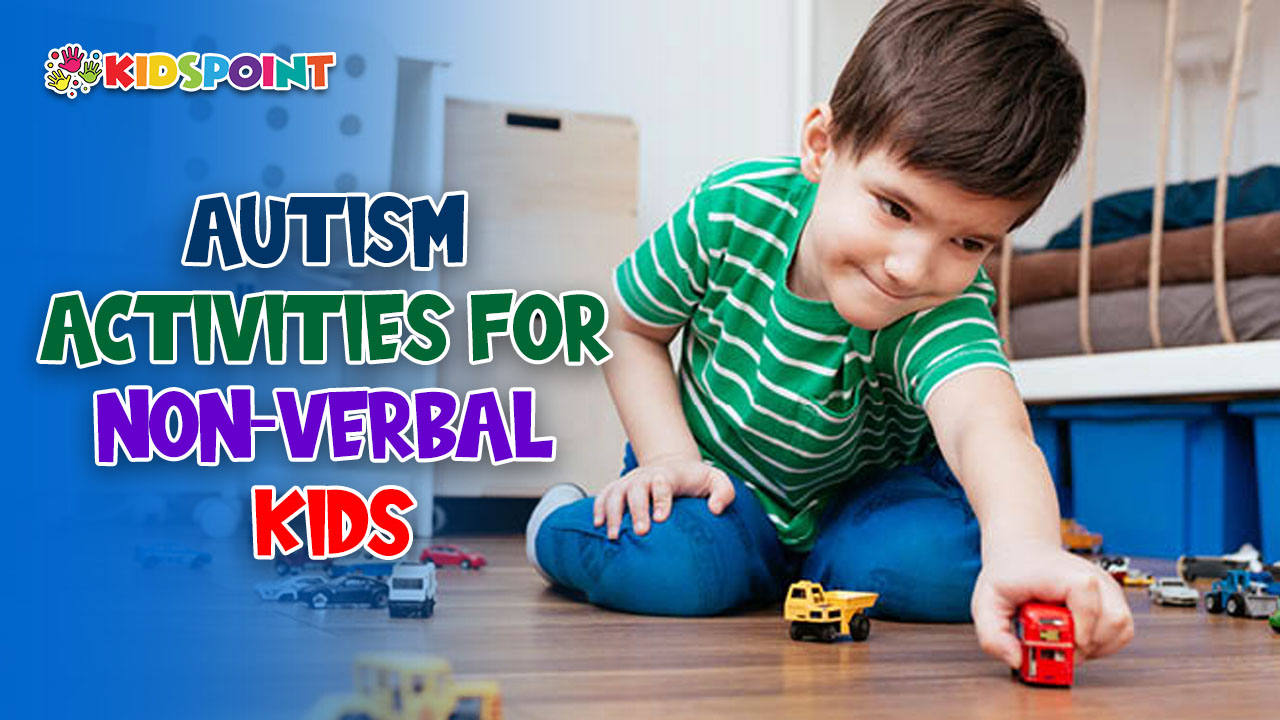Autism spectrum disorder (ASD) presents unique challenges for children, especially those who are non-verbal. At The Kids Point, we understand the importance of providing tailored activities to support the development and well-being of non-verbal children with autism. In this guide, we will explore a variety of engaging activities specifically designed to foster communication, interaction, and learning in these children.
Understanding Non-Verbal Autism
Non-verbal autism refers to individuals who have limited or no verbal communication skills. These individuals may use alternative methods to communicate, such as gestures, pictures, sign language, or assistive communication devices. It’s essential to recognize that non-verbal does not equate to non-communicative; these children have rich inner worlds and unique ways of expressing themselves.
Creating a Supportive Environment
Before diving into specific activities, it’s essential to create a supportive environment conducive to learning and engagement for non-verbal children with autism. Here are some tips:
- Sensory-Friendly Space: Ensure the environment is sensory-friendly by minimizing noise, bright lights, and other sensory stimuli that may overwhelm the child.
- Visual Supports: Use visual supports such as picture schedules, visual timers, and communication boards to enhance understanding and communication.
- Structured Routine: Establish a structured routine with clear expectations and transitions to provide a sense of predictability and security.
- Positive Reinforcement: Use positive reinforcement techniques such as praise, rewards, and encouragement to motivate and reinforce desired behaviors.
- Flexibility: Be flexible and patient, understanding that each child is unique and may require individualized approaches.
Now, let’s explore various activities tailored for non-verbal children with autism:
Sensory Play Activities
- Sensory bins filled with materials like rice, beans, sand, or water can provide tactile stimulation and promote exploration.
- Sensory bottles filled with glitter, beads, or other visually stimulating objects can capture attention and calm the senses.
- Messy play activities like finger painting, shaving cream play, or playing with kinetic sand can engage multiple senses and encourage creativity.
Interactive Games
- Simple turn-taking games such as rolling a ball back and forth, playing peek-a-boo, or stacking blocks together promote social interaction and communication.
- Matching games using pictures or objects can help develop cognitive skills and visual discrimination.
- Interactive storybooks with sound buttons or tactile elements allow for engagement with narratives and storytelling.
Fine Motor Activities
- Threading beads onto strings, lacing cards, or using pegboards help improve hand-eye coordination and fine motor skills.
- Playdough or clay activities encourage hand strength and creativity while providing sensory input.
- Sorting activities using various objects like buttons, coins, or pom-poms develop organization skills and spatial awareness.
Music and Movement
- Singing songs with repetitive lyrics and simple melodies can facilitate language acquisition and expression.
- Dancing to music or playing musical instruments like drums or xylophones promote gross motor skills and rhythmic movement.
- Yoga or simple stretching exercises help improve body awareness and relaxation.
Art and Creativity
- Engaging in open-ended art activities like painting, drawing, or collage-making allows for self-expression and creativity.
- Creating sensory art using materials like feathers, fabric scraps, or textured paper enhances tactile exploration.
- Collaborative art projects where children work together to create a larger artwork foster cooperation and socialization.
Outdoor Exploration
- Nature walks or visits to parks provide opportunities for sensory experiences, exploration, and discovery.
- Gardening activities such as planting seeds, watering plants, and observing growth stimulate the senses and promote responsibility.
- Playground play on swings, slides, and climbing structures encourages physical activity and social interaction with peers.
Technology-Assisted Activities
- Educational apps and software designed for non-verbal children with autism offer interactive learning experiences and communication tools.
- Augmentative and alternative communication (AAC) devices or apps enable non-verbal individuals to express their thoughts, needs, and desires effectively.
- Virtual reality (VR) experiences tailored for sensory stimulation or social skills training provide immersive learning opportunities in a controlled environment.
At The Kids Point, we are committed to providing inclusive and engaging activities for non-verbal children with autism. Through our supportive environment and tailored interventions, we aim to empower every child to thrive and reach their full potential. Together, we can create a world where every voice is heard and celebrated.


